Arizona Lazy B Ranch taught Sandra Day O'Connor some of life's most important lessons
Editor's note: This is the second of The Arizona Republic's 11-chapter profile of former Supreme Court Justice Sandra Day O'Connor. This biography originally published in 2019. It has been updated with her death on Dec. 1, 2023. Read the first chapter: An Arizona original with rancher values
The first female U.S. Supreme Court justice was raised on a remote ranch that straddles the Arizona and New Mexico borders. She rode horses, used a cattle tank as a swimming pool and become accustomed to a cowhand life that didn't include the comforts and distractions offered by a city.
The ranch, located in the southeastern part of Arizona, spilling into the southwestern portion of New Mexico, is unspoiled and rugged. Much of its 250 square miles is high desert, marked more by low brush than cactus. A river, the Gila, flows through the ranch, but most times only at an anemic level.
There are moments, especially at sunrise or sunset, when the ranch offers stunning views. But the Lazy B Ranch is not a spot to visit for the scenery.
It is telling that in the book about her childhood at the Lazy B, which she co-authored with her brother, Sandra Day O'Connor starts by describing not the sight of the ranch, but its sounds. Mostly the quiet.
"When the wind is not blowing, it is so quiet you can hear a beetle scurrying across the ground or a fly landing on a bush," she wrote. A gust of wind would bring more sounds: loose gates banging against fence posts and the windmills turning and creaking.
O'Connor died Dec. 1, 2023, at age 93. The cause was complications related to advanced dementia and a respiratory illness.
Her upbringing on the Lazy B Ranch was so removed from the norm that she was regularly asked about it.
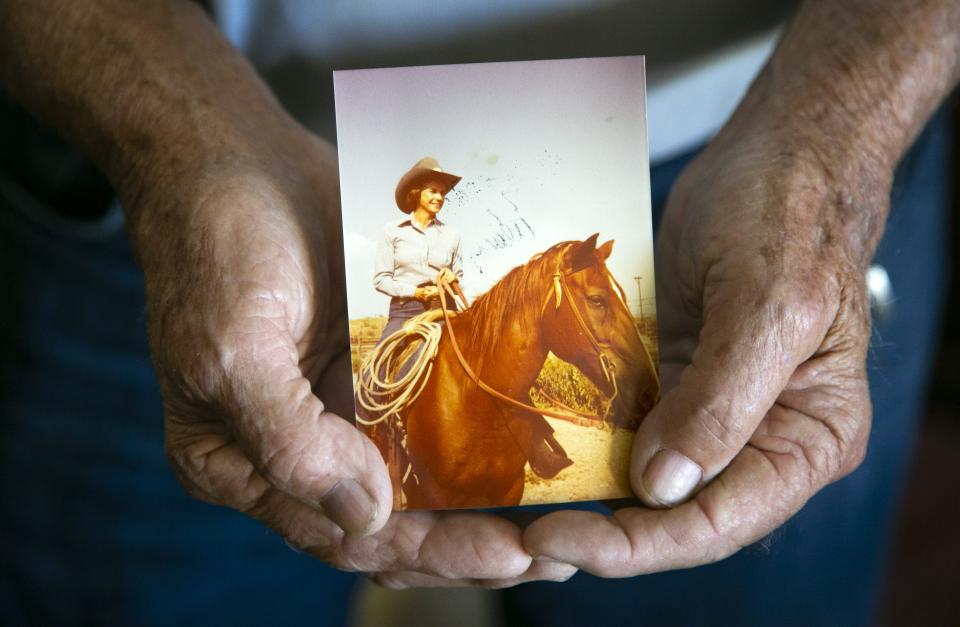
It was why, according to her brother, Alan Day, she wanted to write a book chronicling it. "Lazy B: Growing up on a Cattle Ranch in the American Southwest" was released in 2002.
"People from all over the world," he said in 2018, "would ask her the same question: How could someone from a rural, humble, agricultural background — and being a woman — achieve what you've achieved?"
Day said the two wrote the book to provide a long answer to that question.
Growing up on the Lazy B brought quick lessons in self-reliance, determination and decision-making. A young O'Connor learned, or observed, how problems could be solved, often because there was little opportunity for outside help.
She also saw how decisions made about the ranch, often to answer short-term economic challenges, could have long-lasting ramifications.
Her family bucked government intrusion on their affairs on the ranch. But she also learned that there was a role for government in ensuring that ranchers grazing cattle on public lands be good stewards of that land.
O'Connor's family began selling the property in 1986, but it continues operating as a cattle ranch, even retaining the Lazy B name.
Ranch was 'no country for sissies'
Brian O'Connor, the justice's middle son, said he thought that the ranch upbringing helped convince President Ronald Reagan to nominate his mother for the Supreme Court. Reagan had a vacation home on a ranch in the Santa Ynez mountains in California.
"I think he connected with that image," Brian O'Connor said in a 2018 interview.
Curry Reynolds, the general manager of the ranch in 2018, said during an interview that year that the ranchland upbringing served O'Connor well.
"It doesn't surprise me that she took this professional experience as a ranch cowgirl out here in the country and was able to make it work in a different environment," he said. "She made big decisions here from the time she was young."
More: Sandra Day O'Connor, Supreme Court trailblazer and Arizona icon, dies at 93
The book provided some quaint anecdotes and memories of O'Connor's childhood. How dried yucca stalks could be excellent substitutes for swords in games, for example.
But much of it included the starkness of ranch life, belying any romantic notions of raising cattle in the harsh environs. How animals like horses and cows were not pets so much as modes of transit and income.
She was unsparing in describing the scent given off from branding the Lazy B logo on calves — not to mention the castration. And she told plainly how the working ranch hands would disappear into Duncan, the nearest town, to spend their paychecks on the comforts of liquor and women.
"It was no country for sissies," she wrote in the book, "then or now."
The life was not for everyone, not even everyone in O'Connor's family.
When O'Connor had the idea of writing the "Lazy B" memoir, she approached her brother, Alan, who signed on, and her sister, Ann, who did not.
"She asked Ann to participate in writing the book and she said, 'Oh, no,'" Alan Day said.
He quoted his sister: "My memory of the ranch was hating it and the happiest day of my life was leaving it."
How the ranch came to the Day family
O'Connor's grandfather, H.C. Day, started the ranch, but never intended to live there. Fate would intervene.
Day sold lumber in Kansas and decided to start a ranch out west in 1880, taking advantage of the chance to start a ranch in the newly acquired New Mexico Territory. He bought a herd of cattle from Mexico that already were branded with the letter B lying down flat, leading to the name Lazy B.
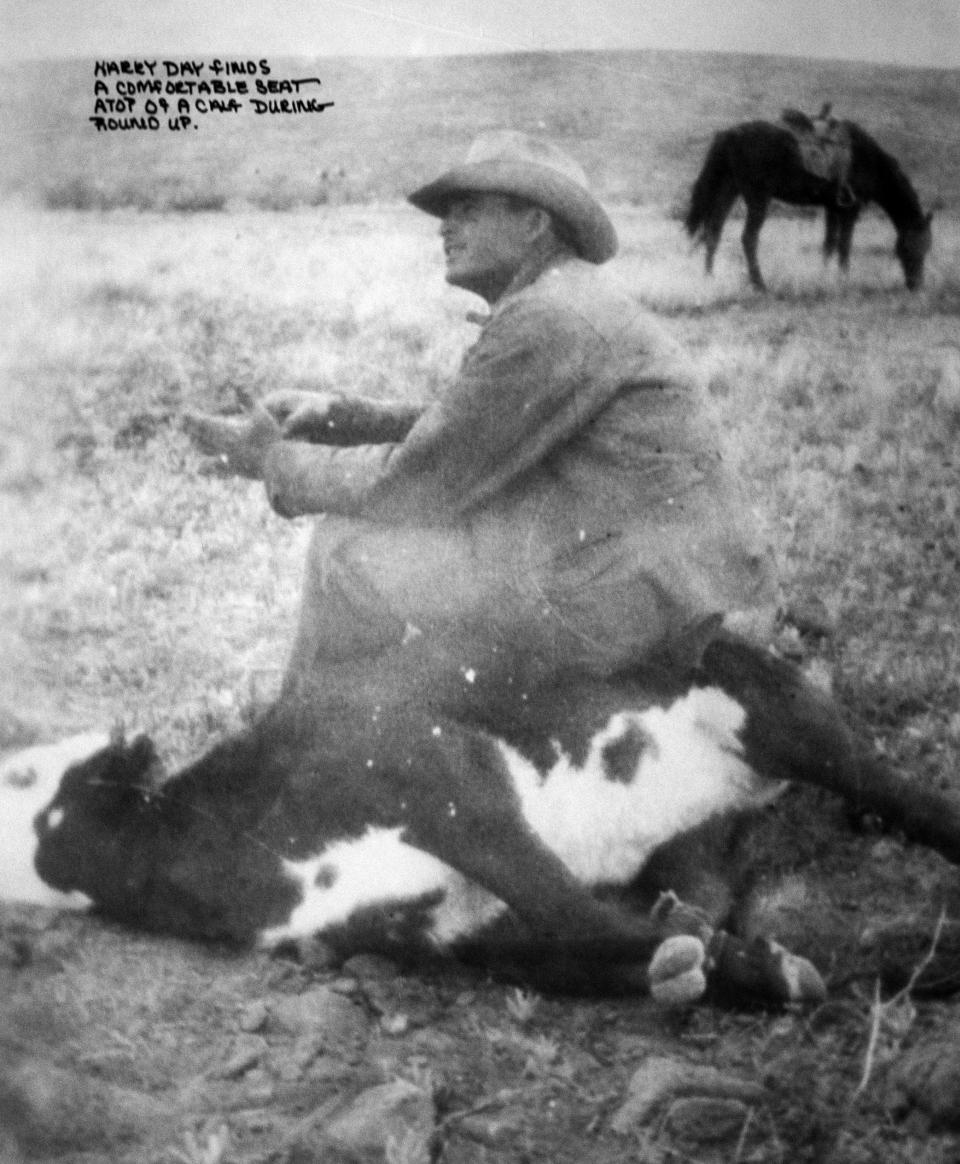
Day hired a manager to oversee the cattle ranch and then took his wife and son on a six-month European trip. It was there, according to the "Lazy B" book, where he learned the manager was stealing from him, placing his own brand on some of the cattle.
Day brought his family to the ranch and lived there for the next decade, trying to correct the ranch's operations. He then found another manager and moved his family, which had grown to five children, to Pasadena, California.
But Day heard about more management trouble at the ranch. He was too ill to make the trip so he sent his youngest son, Harry Day, O'Connor's father, to check on the property.
In a letter home, Harry Day did not seem fond of the ranch, which at the time was producing no income.
"This certainly is a terrible place to live and I hate it here," Harry Day wrote in the letter, dated 1919, "but I will have to stay here a few months until I get some money ahead."
Harry Day's father died two years later and Harry, who was living in Pasadena, was sent back to the Lazy B at the request of lawyers handling the estate to see if the ranch could be salvaged.
One of his first acts was to head to El Paso and buy some bulls on credit to shore up the number of cattle he was raising. The family joke became that he got a wife in the bargain.
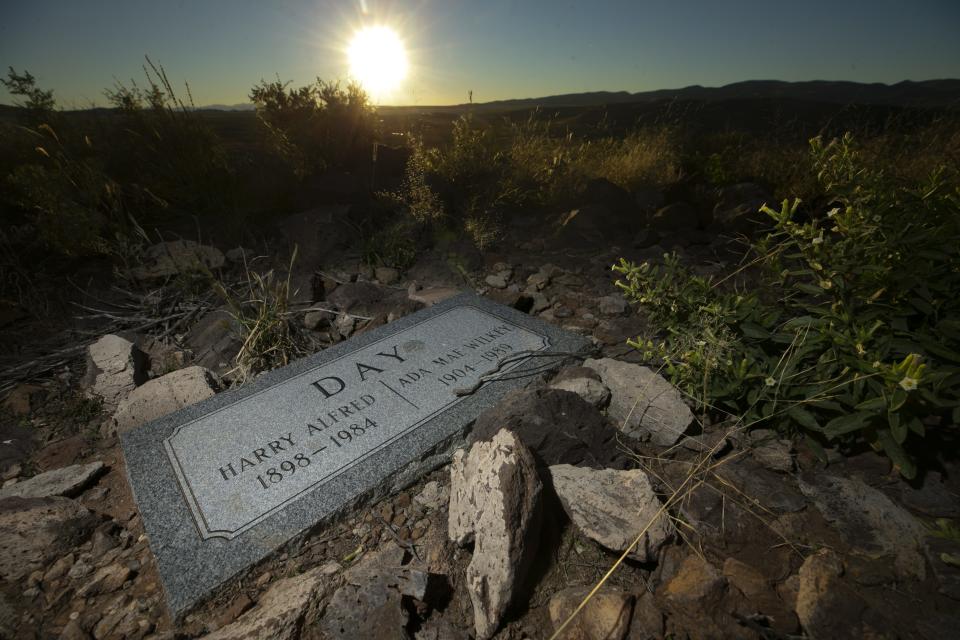
He met Ada Mae, the daughter of the man who sold him the bulls. They married and she moved with him to the Lazy B.
Any animosity O'Connor's father had about the ranch faded with the years. Harry, who as a teenager was a champion swimmer and liked the beach lifestyle, would live out the rest of his life at the Lazy B. He and his wife would raise three children: Sandra, Ann and Alan.
Sandra's youth on the ranch
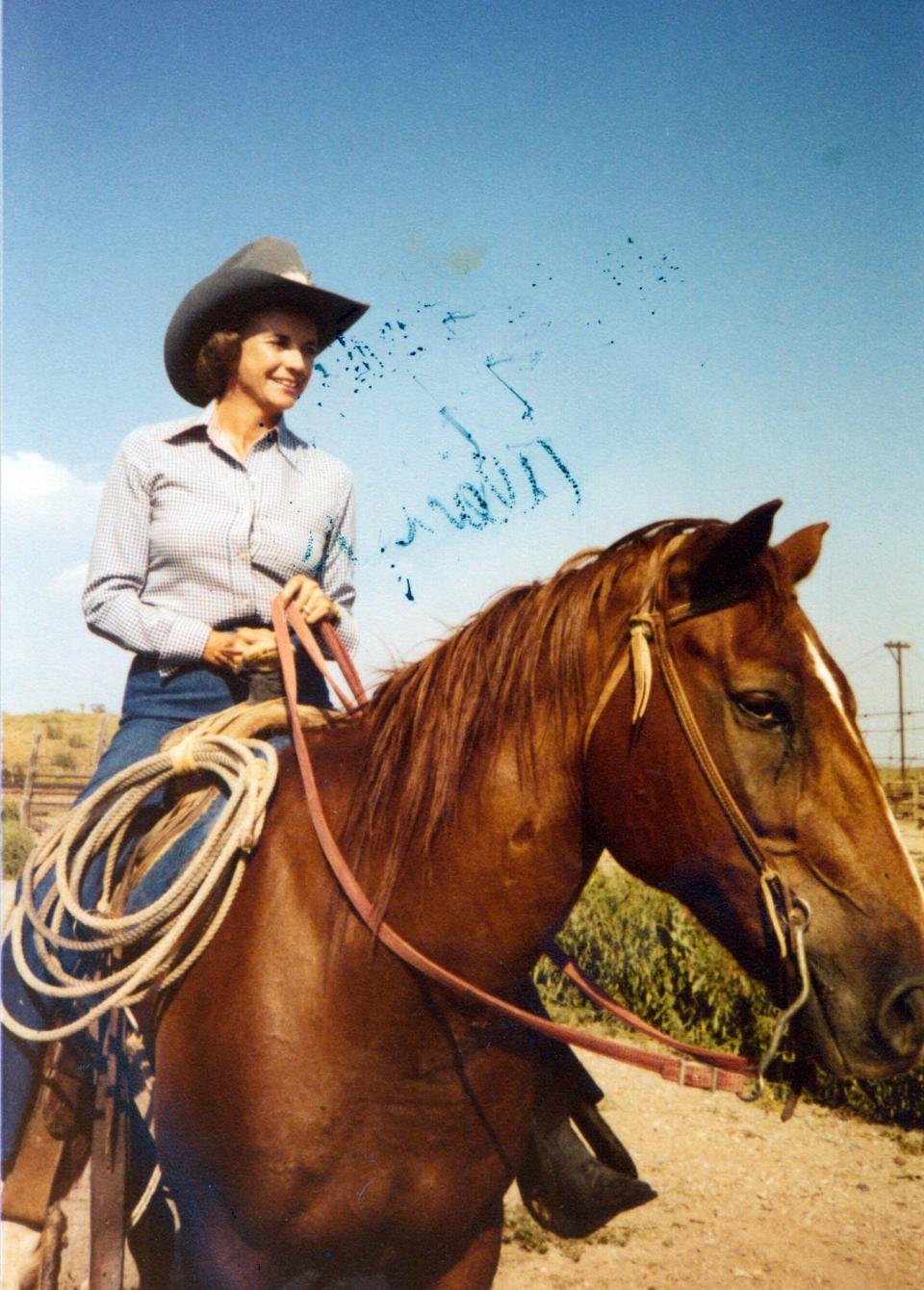
The couple's first daughter, Sandra Day, was born in 1930. The birth occurred at the since-demolished Hotel Dieu Hospital in El Paso.
She would be raised in a four-room home at the ranch's headquarters. The home had no running water for some of her childhood and no electricity through her school years.
Her youngest memories, she recalled in the book, were on horseback.
"My skill with a horse was not great, but I was not afraid of horses, and I loved to get out around the ranch," she wrote. "I cannot remember a time when I did not ride."
In the book, O'Connor wrote that she never favored a cowboy hat. She also followed her mother's fashion of wearing feminine attire rather than the jeans and long-sleeved shirts of a ranch hand.
Her father would allow Sandra to join any ranch activities. That included the cattle roundups.
"Before I rode occasionally on the roundup, it had been an all-male domain," O'Connor wrote in the book. "Changing it to accommodate a female was probably my first initiation into joining an all-men's club, something I did more than once in my life."
It helped that she was the daughter of the boss. But, O'Connor also showed she belonged.
"After the cowboys understood that a girl could hold up her end, it was much easier for my sister, my niece, and the other girls and young women who followed to be accepted in that rough-and-tumble world," she wrote.
For school, O'Connor's parents sent her to live with her grandmother in El Paso. There, she attended Radford School for Girls. Though some of her classmates were in her same situation — coming from a ranch far from the school — most of her classmates knew nothing of life outside a city.
O'Connor, in the book, described going to their homes which "seemed very grand compared to our house at the Lazy B."
"It made me feel awkward and a bit uneasy to be in such surroundings," she wrote.
In sixth grade, during the week of spring break, O'Connor invited some of her citified friends to spend time at the ranch. They rode horses, harvested eggs from the hen house and attempted to milk cows.
"Everyone had a wonderful time," she wrote. "After that, I felt a little more at ease with my city-born friends and they had good memories of their visit to the Lazy B."
Obituary: Sandra Day O'Connor, Supreme Court trailblazer and Arizona icon, dies at 93
O'Connor showed brilliance early on at school, her brother, Alan, said.
"She was clearly a superstar in everything she ever tried from first grade on," he said.
O'Connor's siblings would, for the most part, go to school in Duncan, the nearest town to the ranch. Alan Day said he thought his parents put more attention on his older sister, just as a farmer might dote more on a crop that looks to be thriving.
"Sandra was a bumper crop; I was the stunted crop," Alan Day said during a 2018 interview. "That was fine with me. I loved it. I didn't feel (my parents) were on my case or disapproving."
After high school, at the age of 16, O'Connor enrolled at Stanford University.
Stanford, and spring break at the Lazy B
O'Connor was fulfilling the ambition of her father, who had yearned to go to Stanford before circumstances had tied him to the Lazy B.
She would often return to the ranch and attempt to tell her brother what life was like at the elite northern California university.
"She would do her best to describe it," Alan Day said, "but it was so foreign to me that I had nothing to compare it with. It didn't do me a lot of good to hear what Stanford was like."
At Stanford, O'Connor met fellow law student John O'Connor. She brought him to the ranch during a spring break. It was the first time John O'Connor had been on a ranch.
Sandra brought her beau to the corral where calves were being branded, vaccinated and castrated.
O'Connor's father nodded at his daughter and her boyfriend briefly but continued his work. After a bit, he waved the couple over, greeted John and said that they were a little busy at the moment, but would be done in a while.
He then took a piece of bailing wire and reached into a bucket that held some freshly cut testicles. He skewered them onto the wire and held them over the fire used to heat up the branding irons. After they were cooked, sizzling hot, he brought it over to John to try.
John O'Connor gamely ate the "mountain oyster" and declared it "pretty good," according to the book.
"'Welcome to the Lazy B,' I thought. There is nothing like a gracious introduction to ranch life," Sandra Day O'Connor wrote.
O'Connor's father gave a similar greeting to another one of his daughter's suitors who came to visit: William Rehnquist. He was O'Connor's classmate at Stanford who also would become a Supreme Court justice.
Rehnquist "gamely" ate the roasted testicle, according to the 2019 biography of O’Connor, "First," but failed to impress O'Connor's parents. He referred to her father as an "old cattle baron," the book says, and offended O'Connor's mother with his table manners.
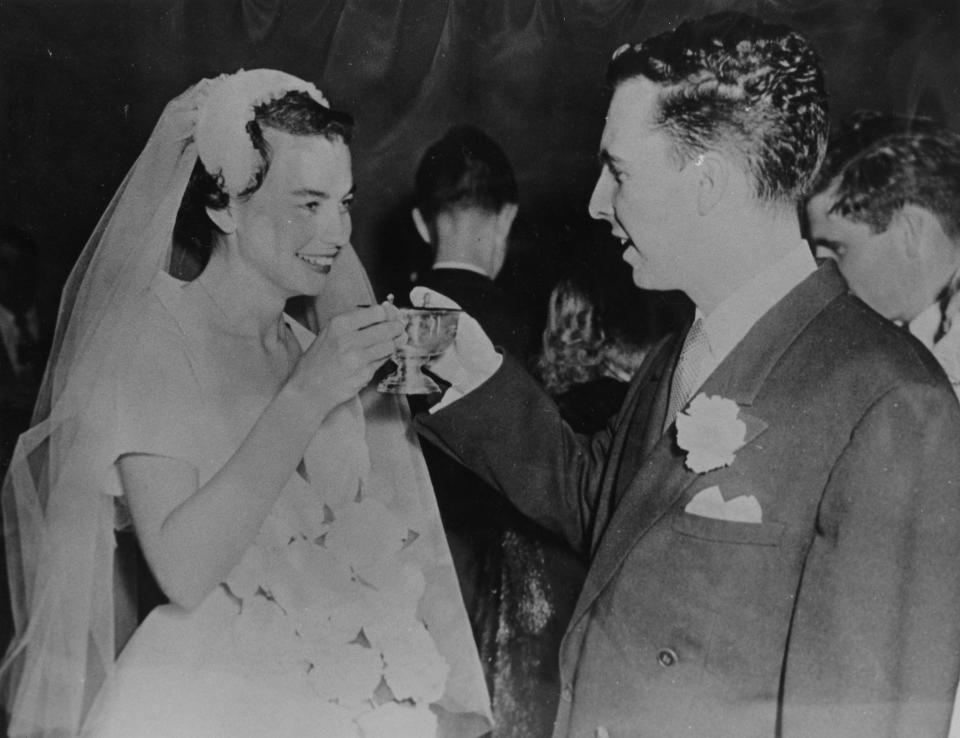
A wedding near Christmas
The ranch hosted the wedding of Sandra and John O'Connor on Dec. 20, 1952. Sandra's mother, Ada Day, recounted the nuptials in a story she wrote from the January 1953 issue of Arizona Cattlelog, the official publication of the Arizona Cattle Growers Association.
It rained some for three days before the wedding, though that had the benefit of settling the dust on the road to the ranch, according to the article, which carried the byline of Mrs. Harry Day.
The ceremony was held in the living room of the ranch house, which was 15 square feet, Ada Day wrote. Guests then walked 500 feet, along a path lined with candles inside paper bags, to the much more spacious barn for the reception. The barn, Day wrote, was decorated with freshly cut evergreen boughs. Some were crafted to make a faux ceiling.
A ping pong table was converted to a banquet table, which held the bounty of pit-cooked barbecued beef, turkey, ham and zucchini corn pudding, the article said.
The happy couple had the first dance to "Always." Then, the article said, the 100 invited guests joined them on the floor, which was painted blue for the occasion.
A world away from Washington
After she was named to the U.S. Supreme Court in 1981, the ranch became the focus of international media attention. People magazine sent a photo crew down for shots of O'Connor's mother and father.
"It did not seem possible that a ranch girl would grow up to serve on our nation's highest court," O'Connor wrote.
She recalled taking the oath and seeing her parents standing next to President Ronald Reagan and his wife, Nancy. "It was a moment suspended in time, bridging the life in the harsh desert terrain of the Lazy B and the fast-paced, sophisticated life in Washington D.C.," she wrote.
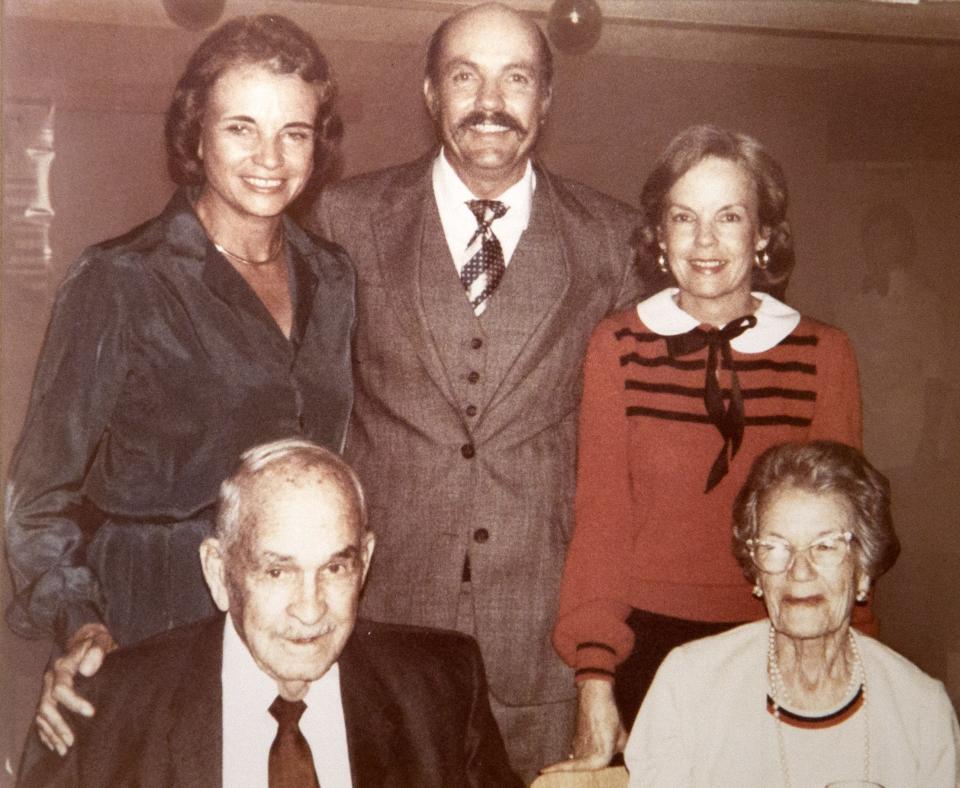
O'Connor would return to the ranch as often as she could, staying with her parents and her brother, Alan, who took over management of the Lazy B.
O'Connor described the Lazy B as a cocoon of sorts, a spot where the cares of the outer world were shut away.
"Within minutes it would be as though we had never left," she wrote. "The immediate needs and problems of ranch life became the topic of conversation: the cattle, the rainfall and grass conditions, the conditions of various wells and fences, the cowboys and the equipment."
By the 1980s, the 150,000-acre ranch had become a financial drain, according to "First," O'Connor's authorized biography, written by Newsweek reporter Evan Thomas.
Despite their misgivings, the Day family began selling off pieces of the ranch. By 1992, only one parcel remained, Thomas noted.
O'Connor never went back.
"She had her memories and didn't want to spoil them," Thomas said in a 2018 interview.
The two large windmills whose sounds O'Connor described have become largely ornamental. They no longer pump water out of the ground, but Kristen Sorensen, who managed the ranch in 2018, kept them operating, making sure they still turn and creak.
"They're landmarks," she said at the time. "Now they just sound like these old spirits."
The windmills sit outside the home where O'Connor grew up, near the cattle pond she used as a swimming pool.
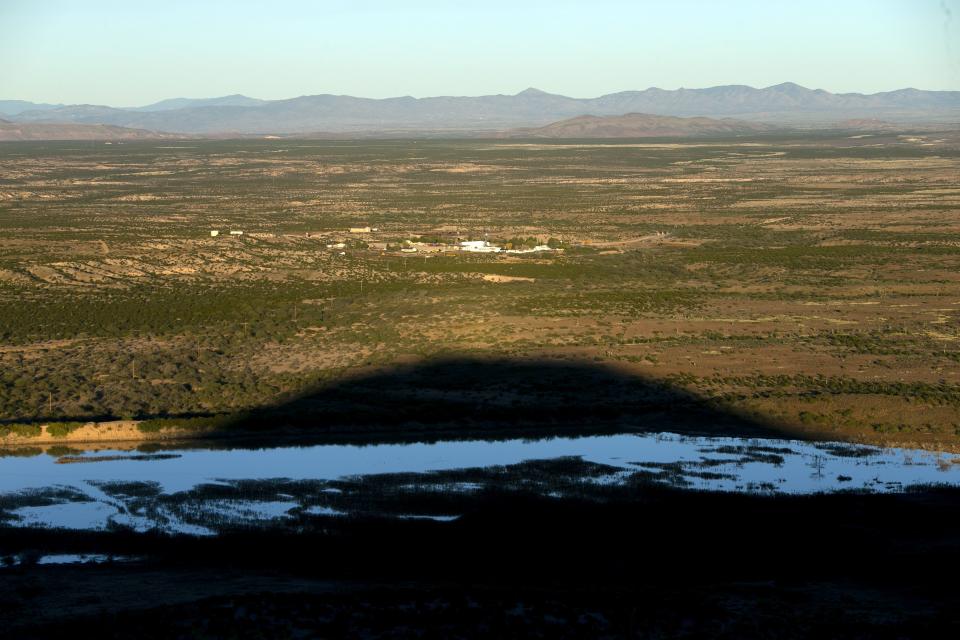
'She wants her ashes scattered here'
Behind the home looms a symmetrical mountain named for its shape: Round Mountain.
The ashes of O'Connor's parents are scattered there. And, according to her brother, it is where O'Connor wishes her remains scattered, too.
"This is our heritage," Alan Day said, during a visit to the ranch in November 2018. He plans to have his ashes scattered there as well. "We were raised here and it's in our blood and it's just the place we feel most at home.
"Maybe the country wants her in another place," he said, "But she's expressed to me no less than six times that she wants her ashes scattered here on Round Mountain."
PREVIOUS CHAPTER: With work ethic gained on a ranch, O'Connor embodies Arizona
NEXT CHAPTER: O'Connor broke barriers as a young lawyer
Sandra Day O'Connor: American legend
Introduction: Arizona ranch girl, American legend
Chapter 1: O'Connor embodies Grand Canyon State
Chapter 2: Ranch life taught some of the most important lessons
Chapter 3: Breaking barriers as a young lawyer
Chapter 4: Rise from GOP activist to lawmaker
Chapter 5: A tough and demanding judge — but fair
Chapter 6: A well-connected candidate draws Washington's attention
Chapter 7: Confirmation hearing foreshadowed today's politics
Chapter 8: As the Supreme Court shifted right, she shifted to the middle
Chapter 9: 3 key Supreme Court opinions to remember
Chapter 10: In retirement, a focus on civics and conversation
Chapter 11: Raising 3 boys and breaking the glass ceiling
Obituary: Arizona icon Sandra Day O'Connor dies at 93
Lying in state: O'Connor makes final journey to Supreme Court
Washington, D.C. funeral: Biden remembers O'Connor's legacy
Phoenix funeral: O'Connor receives her final goodbye in Phoenix
This article originally appeared on Arizona Republic: Where is Sandra Day O'Connor from? She grew up on Lazy B Ranch in Arizona

